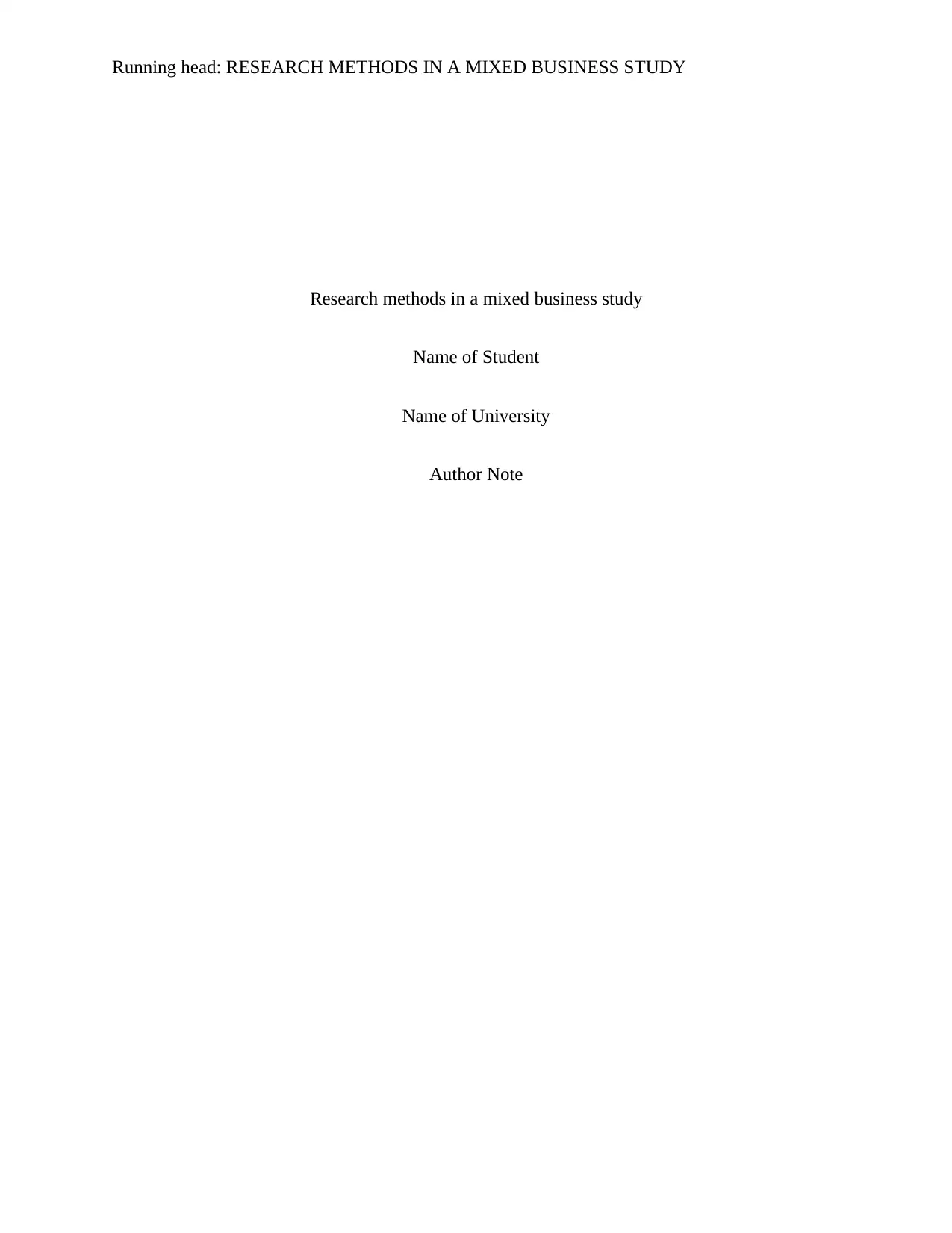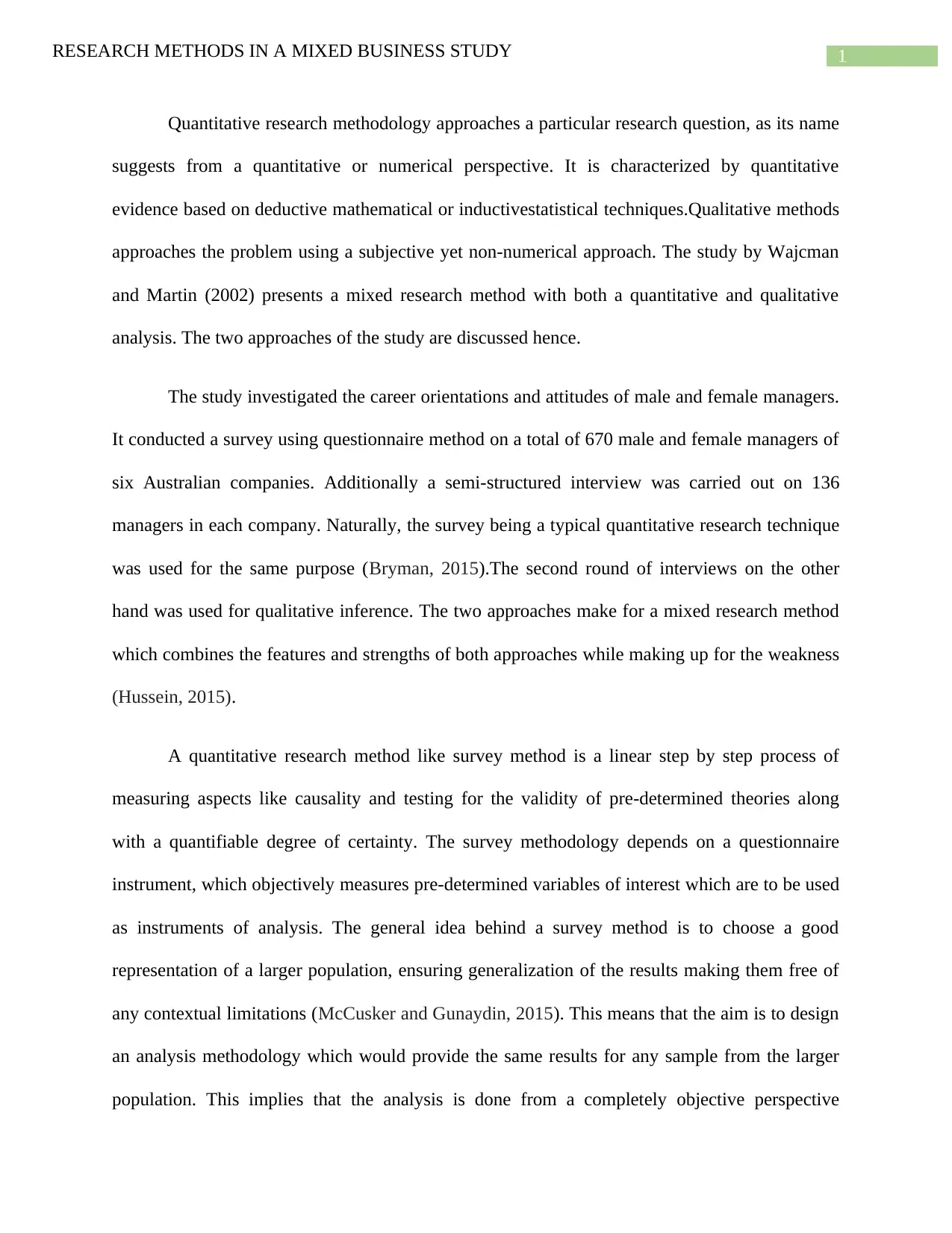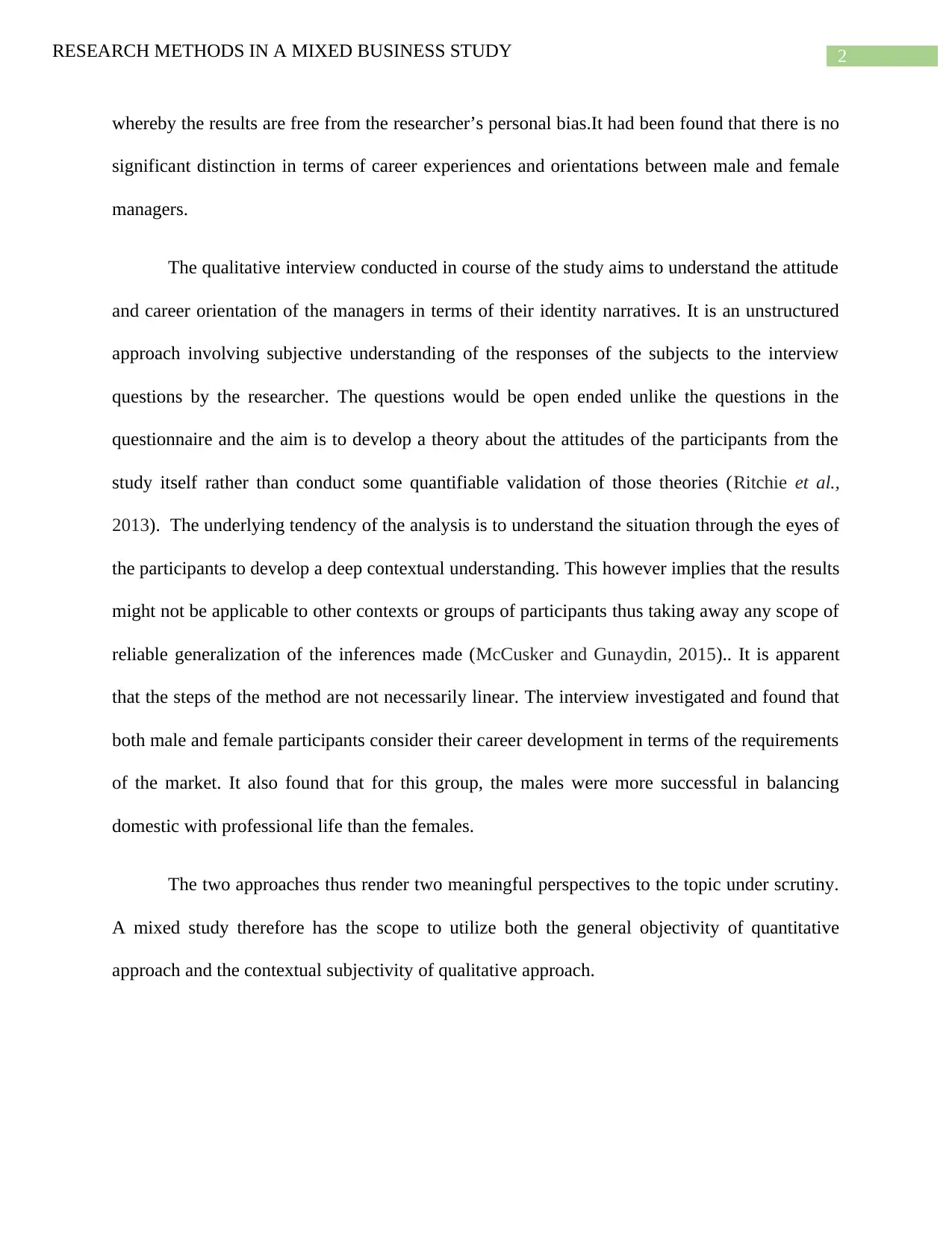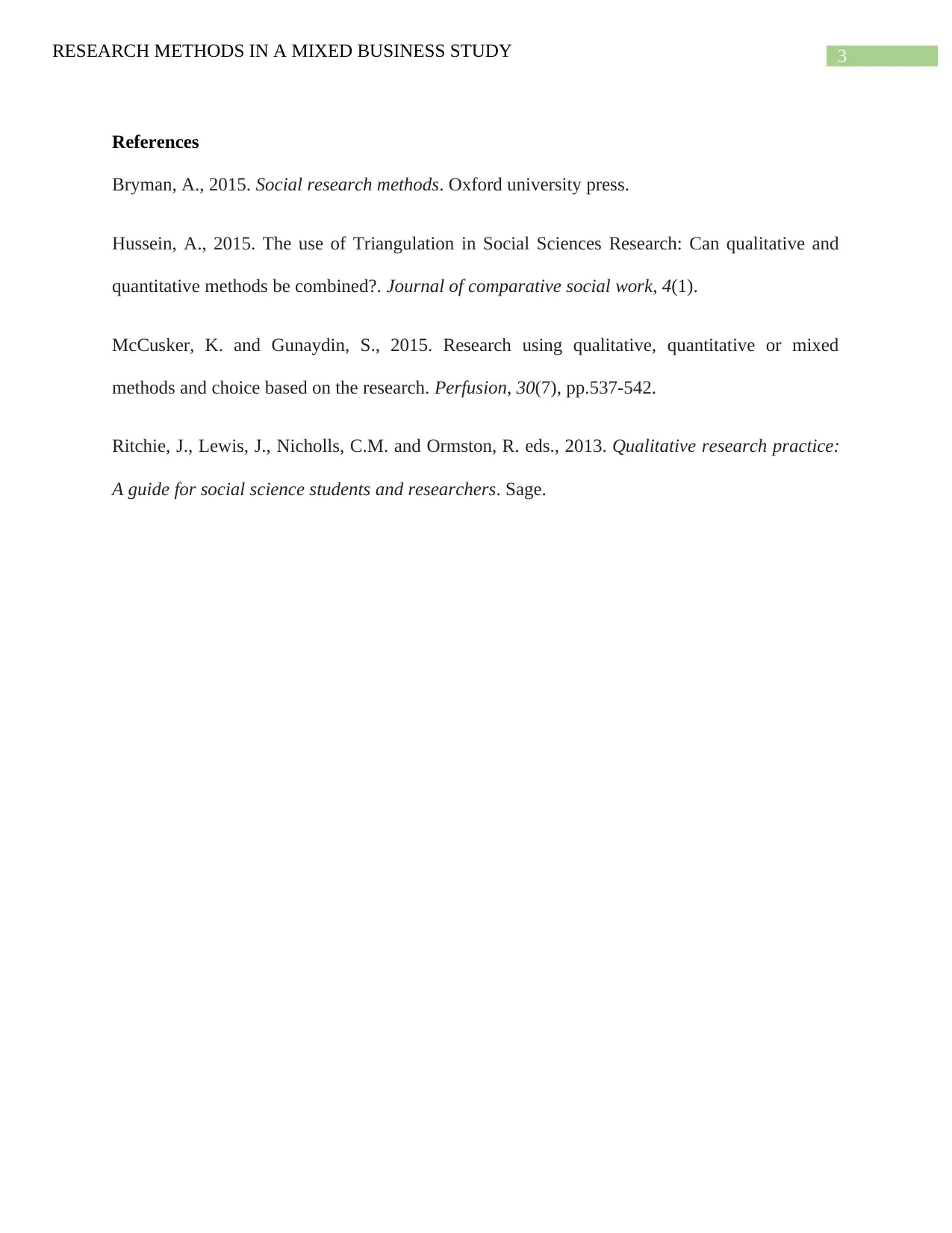Report on Research Methods in a Mixed Business Study: Analysis
VerifiedAdded on 2021/04/17
|4
|770
|256
Report
AI Summary
This report provides an in-depth analysis of research methods employed in a mixed business study, focusing on both quantitative and qualitative approaches. It examines a study investigating career orientations and attitudes of male and female managers using a combination of survey and interview methods. The report highlights the strengths and weaknesses of each approach, emphasizing the objectivity of quantitative methods like surveys and the subjective understanding gained from qualitative interviews. It discusses the survey methodology, the use of questionnaires, and the importance of ensuring generalizability of the results. Additionally, it explores the semi-structured interview process, which aims to develop theories about participants' attitudes. The report concludes by demonstrating how a mixed-methods approach combines the benefits of both quantitative and qualitative methods, offering a comprehensive understanding of the research topic and the importance of considering both objective and subjective perspectives.
1 out of 4











![[object Object]](/_next/static/media/star-bottom.7253800d.svg)